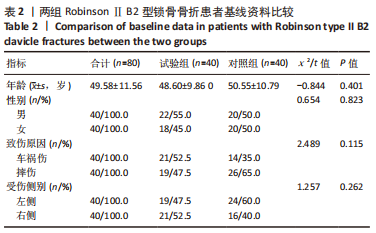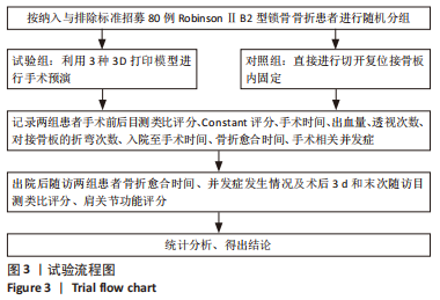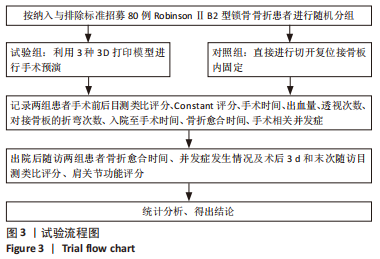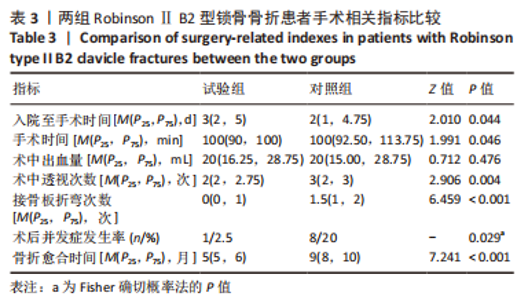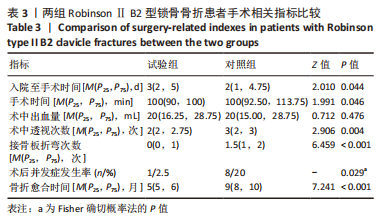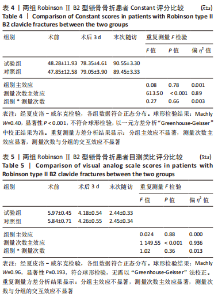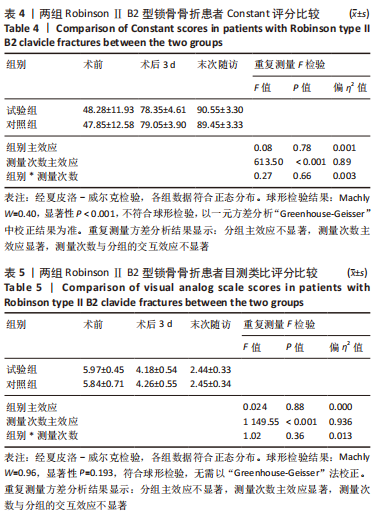[1] BURNHAM JM, KIM DC, KAMINENI S. Midshaft Clavicle Fractures: A Critical Review. Orthopedics. 2016;39(5):e814-e821.
[2] FRIMA H, VAN HEIJL M, MICHELITSCH C, et al. Clavicle fractures in adults; current concepts. Eur J Trauma Emerg Surg. 2020;46(3):519-529.
[3] STEGEMAN SA, FERNANDES NC, KRIJNEN P, et al. Reliability of the Robinson classification for displaced comminuted midshaft clavicular fractures. Clin Imaging. 2015;39(2):293-296.
[4] MALKOC M, KORKMAZ O, BAYRAM E, et al. Short-term Results of Robinson Type 2B2 Clavicular Fractures Treated Conservatively or Surgically. Orthopedics. 2016;39(2):e276-e279.
[5] SKELLEY NW, SMITH MJ, MA R, et al. Three-dimensional Printing Technology in Orthopaedics. J Am Acad Orthop Surg. 2019;27(24):918-925.
[6] VAISH A, VAISH R. 3D printing and its applications in Orthopedics. J Clin Orthop Trauma. 2018;9(Suppl 1):S74-S75.
[7] RAMPONI DR, JO CEREPANI M. Clavicle Fractures. Adv Emerg Nurs J. 2021; 43(2):123-127.
[8] KING PR, EKEN MM, LAMBERTS RP. Epidemiology of clavicle shaft fractures in a public hospital in South Africa: differences between developing and developed countries. Eur J Trauma Emerg Surg. 2022;48(6):4935-4941.
[9] NEER CS 2nd. Nonunion of the clavicle. J Am Med Assoc. 1960;172:1006-1011.
[10] LIU ZQ, ZHANG MS, ZHOU ZF, et al. Comparative study of three different fixation techniques for the treatment of Neer type IIb distal clavicle fractures: A retrospective cohort study. Front Surg. 2023;10:1100720.
[11] ZLOWODZKI M, ZELLE BA, COLE PA, et al. Treatment of acute midshaft clavicle fractures: systematic review of 2144 fractures: on behalf of the Evidence-Based Orthopaedic Trauma Working Group. J Orthop Trauma. 2005;19(7):504-507.
[12] JIANG H, QU W. Operative treatment of clavicle midshaft fractures using a locking compression plate: comparison between mini-invasive plate osteosynthesis (MIPPO) technique and conventional open reduction. Orthop Traumatol Surg Res. 2012;98(6):666-671.
[13] ZHANG T, CHEN W, SUN J, et al. Minimally invasive plate osteosynthesis technique for displaced midshaft clavicular fracture using the clavicle reductor. Int Orthop. 2017;41(8):1679-1683.
[14] VLACHOPOULOS L, SCHWEIZER A, MEYER DC, et al. Computer-assisted planning and patient-specific guides for the treatment of midshaft clavicle malunions. J Shoulder Elbow Surg. 2017;26(8):1367-1373.
[15] ZHANG D, DYER GSM, EARP BE. Factors Associated With Surgical Treatment of Isolated, Displaced Midshaft Clavicle Fractures. Orthopedics. 2021;44(4): e515-e520.
[16] ZHUANG Y, ZHANG Y, ZHOU L, et al. Management of comminuted mid-shaft clavicular fractures: Comparison between dual-plate fixation treatment and single-plate fixation. J Orthop Surg (Hong Kong). 2020;28(2): 2309499020915797.
[17] LI G, LIAO J, SU W. Open reduction and plate fixation versus sling in treatment of mid-shaft fractures of clavicle: A prospective randomized study protocol. Medicine (Baltimore). 2021;100(4):e23910.
[18] SASSI E, HANNONEN J, SERLO W, et al. Increase in surgical fixation of pediatric midshaft clavicle fractures since 2008. BMC Musculoskelet Disord. 2022;23(1):173.
[19] SERPICO M, TOMBERG S. The emergency medicine management of clavicle fractures. Am J Emerg Med. 2021;49:315-325.
[20] BEREDJIKLIAN PK, WANG M, LUTSKY K, et al. Three-Dimensional Printing in Orthopaedic Surgery: Technology and Clinical Applications. J Bone Joint Surg Am. 2020;102(10):909-919.
[21] LARSEN CG, STAPLETON EJ, SGAGLIONE J, et al. Three-Dimensional Bioprinting in Orthopaedics. JBJS Rev. 2020;8(4):e0204.
[22] MURPHY SV, DE COPPI P, ATALA A. Opportunities and challenges of translational 3D bioprinting. Nat Biomed Eng. 2020;4(4):370-380.
[23] ASHAMMAKHI N, HASAN A, KAARELA O, et al. Advancing Frontiers in Bone Bioprinting. Adv Healthc Mater. 2019;8(7):e1801048.
[24] RAHIMNEJAD M, REZVANINEJAD R, REZVANINEJAD R, et al. Biomaterials in bone and mineralized tissue engineering using 3D printing and bioprinting technologies. Biomed Phys Eng Express. 2021;7(6). doi: 10.1088/2057-1976/ac21ab.
[25] WIXTED CM, PETERSON JR, KADAKIA RJ, et al. Three-dimensional Printing in Orthopaedic Surgery: Current Applications and Future Developments. J Am Acad Orthop Surg Glob Res Rev. 2021;5(4):e20.00230-11.
[26] LI B, ZHANG M, LU Q, et al. Application and Development of Modern 3D Printing Technology in the Field of Orthopedics. Biomed Res Int. 2022; 2022:8759060.
[27] LI H, FAN W, ZHU X. Three-dimensional printing: The potential technology widely used in medical fields. J Biomed Mater Res A. 2020;108(11):2217-2229.
[28] BROWN GA, FIROOZBAKHSH K, DECOSTER TA, et al. Rapid prototyping: the future of trauma surgery? J Bone Joint Surg Am. 2003;85-A Suppl 4:49-55.
[29] 顾锡龙.数字化骨科技术在锁骨中段骨折治疗中的应用研究[D].西宁:青海大学,2021.
[30] 周燚,吴岫霏,张晓萱,等.基于CAD的3D打印技术在复杂骨科疾病治疗中的应用综述[J].医疗卫生装备,2022,43(11):86-90,97.
[31] 穆胜凯,刘士凯,郝连升.3D镜像打印结合微创经皮锁定钢板内固定技术治疗成人锁骨中段移位骨折的临床疗效研究[J].中国临床新医学, 2022,15(4):344-347.
[32] HUANG JI, TOOGOOD P, CHEN MR, et al. Clavicular anatomy and the applicability of precontoured plates. J Bone Joint Surg Am. 2007;89(10): 2260-2265.
[33] SHON HC, BANG JY, LEE Y, et al. Optimal plate position in minimally invasive plate osteosynthesis for mid-shaft clavicle fractures: simulation using 3D-printed models of actual clinical cases. Eur J Trauma Emerg Surg. 2021;47(5):1411-1416.
|

